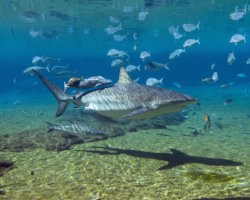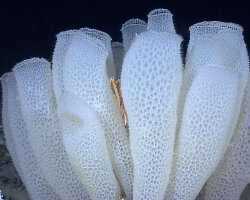Sealife guideThe banded guitarfishZapteryx exasperata
Last updated on 09/29/2025 at 10:36 PM
Taxonomy
- Common name: Banded guitarfish
- French name: Poisson guitare rayé
- Spanish name: Guitarra bandeada
- Scientific name: Zapteryx exasperata (Jordan & Gilbert, 1880)
- Family name: Rhinobatidae
- Order name: Rhinopristiformes
- Class name: Elasmobranchii
Description
The banded guitarfish has a broad, disc-shaped body with a short, rounded snout. The banded guitarfish displays a dorsal coloration ranging from sandy brown to dark gray with characteristic dark bars and a lighter ventral coloration dotted with dark spots behind the pectoral fins.
As an adult, the banded guitarfish can reach nearly 3.3 feet in length for females and about 2.6 feet for males.
Geographic range
The banded guitarfish inhabits the eastern Pacific waters, ranging from California in the United States to the city of Mazatlán in Mexico, including the Gulf of California. Sightings as far south as Peru may actually be of a closely related species.
Habitat
The banded guitarfish is a benthic fish and is found on rocky and sandy reef bottoms. It generally inhabits shallow waters around 65 feet deep but can also be found down to 656 feet.
The banded guitarfish moves slowly over sandy or rocky bottoms where it easily camouflages due to its coloration.
Diet
The banded guitarfish primarily feeds on
mollusks, benthic
crustaceans and small demersal fish. Adults may occasionally hunt pelagic fish.
Reproduction
The banded guitarfish is
ovoviviparous, meaning that embryos first feed on yolk and then on uterine secretions enriched with nutrients. After 3–4 months of gestation, females give birth to 4–11 juveniles that are already around 6 inches long.
The banded guitarfish reaches sexual maturity at around 2 feet in size, a few inches more for females and can live up to approximately 20 years.
Did you know ?
The banded guitarfish is often caught in artisanal fishing nets, particularly in the Gulf of California. Its low reproductive capacity and late maturity make it a species potentially at risk from fishing.
Within the same family

Atlantic guitarfish
(Rhinobatos lentiginosus)
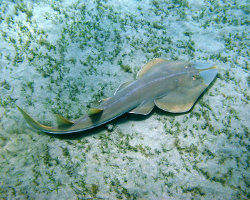
Beaked guitarfish
(Rhinobatos schlegelii)

Eastern fiddler ray
(Trygonorrhina fasciata)
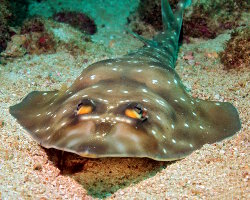
Gorgona guitarfish
(Pseudobatos prahli)

Shovelnose guitarfish
(Pseudobatos productus)
Discover also

Big skate
(Raja binoculata)
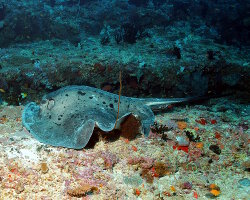
Black blotched stingray
(Taeniura meyeni)
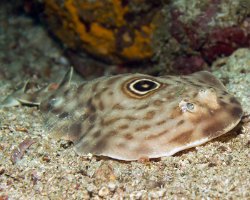
Bullseye electric ray
(Diplobatis ommata)
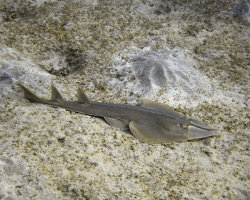
Halavi guitarfish
(Glaucostegus halavi)
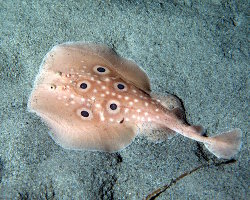
Ocellate torpedo
(Torpedo torpedo)
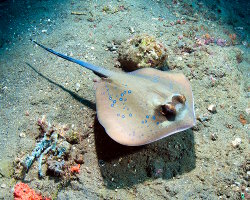
Ribbontail stingray
(Taeniura lymma)
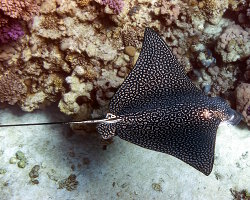
Spotted eagle ray
(Aetobatus ocellatus)

Yellow stingray
(Urobatis jamaicensis)
The marine species from northeastern Pacific ocean

Big skate
(Raja binoculata)

Glassy tunicate
(Ascidia paratropa)

Heart crab
(Phyllolithodes papillosus)

Spiny pink scallop
(Chlamys hastata)
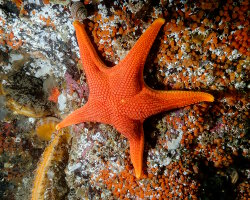
Vermillion sea star
(Mediaster aequalis)





















